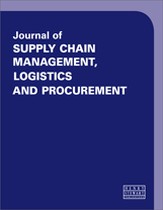Verifying ‘where’ in the supplier network builds resilience and strengthens brand trust
Abstract
Opaque supply chains are a liability, especially for businesses that want to maintain their brand integrity, adhere to regulations and stabilise their investments. It is no longer profitable or ethical for supply chain owners to remain in the dark about the locations and operations of their multiple tiers of suppliers. Reputable brands, financial institutions and regulators are pushing for more transparency in each step of the value chain to safeguard regional resources and ensure business continuity. These organisations have established that location intelligence is the foundation for transparency, as the verification of links in a supply chain begins with where a product starts its journey as a raw material. That is why a group of location-based industries and major goods producers formed the Supply Chain Data Partnership, which has developed a proof-of-concept verification process and registry for increasing the end-to-end transparency of global supply chains. Modern geographic information system (GIS) technology and ample availability of satellite imagery make it possible to partially verify locations in a less costly and more efficient manner, as well as maintain and monitor those verifications in a secure independent registry. The business incentive for a supplier to participate in such a verification process is their ability to obtain a unique label or stamp that serves as proof of independent verification to meet growing buyer demands for transparency. The label or stamp would be theirs to use for marketing purposes and to attach on goods in a radio-frequency identification (RFID) tag or barcode. A supplier could also use the label or stamp to attract new business from supply chain owners seeking verified suppliers. Ultimately, the label or stamp would be a contribution to a finished product’s digital passport, a traceability measure that will soon be mandated for goods sold inside the European Union (EU) and may be mandated elsewhere in the future. This paper discusses the Supply Chain Data Partnership’s endeavour to create a location verification process and registry to promote supply chain transparency. The paper presents the results of a proof of concept focused on soybeans, then discusses the potential positive impact of adopting these processes and tools.
The full article is available to subscribers to the journal.
Author's Biography
Donna Lyndsay Over the last four years, Donna Lyndsay supported Ordnance Survey’s mission to be a world leader in geospatial services, delivering location insight for positive impact. Donna is also Vice Chair of the Space4Climate group, which supports UK leadership in creating and using trusted satellite data for climate action. Donna has previously worked as a national park cartographer, an e-commerce director at Stanfords and a European Space Agency Business Applications Ambassador. She has a Master’s degree in geographic information systems (GIS) with remote sensing and has completed the Business and Climate Change: Towards Net Zero Emissions course from the University of Cambridge Institute for Sustainability Leadership.
Stephen Croney is a Head of Sector at Esri UK working in the Government Team. He supports some of the largest government data producers in the UK, including the national mapping agency, the Ordnance Survey. Prior to Esri, Stephen worked at a number of local government organisations as a geographic information system (GIS) and data lead, gaining a great deal of insight into the value GIS and geospatial data has as a means to improve insight, understanding and evidence to policy and decision making. Stephen has over 20 years of experience in the geospatial sector and is a former council member of the Association for Geographic Information (AGI). With a degree from Kingston University in GIS and business management, he is a passionate evangelist for the value of a geographic approach and its ability to deliver positive outcomes for organisations, government and society.
Cindy Elliott leads the Business Sector Industry Strategy Team at Esri, the global market leader in geospatial intelligence. She helps shape the role of geospatial analytics within commercial industries related to advanced market analytics, supply chain sustainability and business resilience. Her work has been pivotal in building awareness for location technology’s ability to meet the growing complexities in global enterprise networks. Cindy is a member of the US Department of Commerce Advisory Committee for Supply Chain Competitiveness (ACSCC) and the Supply Chain Advisory Board at the TCU Neeley Center for Supply Chain Innovation. She earned a Master’s degree in international management from the Thunderbird Graduate School and completed Harvard Business School’s Program for Leadership Development.
Citation
Lyndsay, Donna, Croney, Stephen and Elliott, Cindy (2025, June 1). Verifying ‘where’ in the supplier network builds resilience and strengthens brand trust. In the Journal of Supply Chain Management, Logistics and Procurement, Volume 7, Issue 4. https://doi.org/10.69554/AORT2848.Publications LLP
